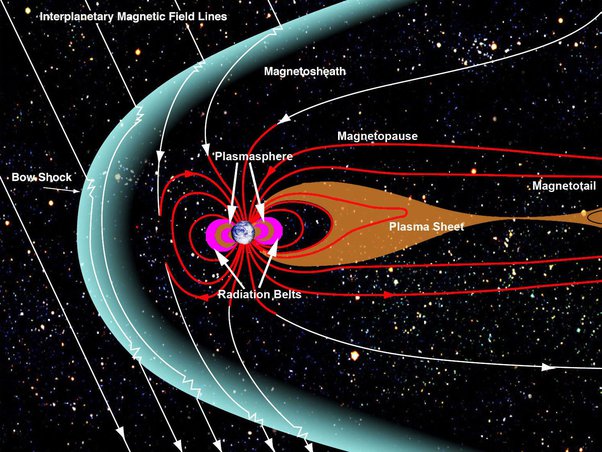beyond our terrestrial home resides a realm of celestial wonders, where the second planet from our star, Venus, offers an enigmatic paradox. Stripped of a global magnetic field, this fiery world appears vulnerable to the relentless solar wind. Yet, amidst this cosmic vacuum, Venus harbors a hidden shield within its atmosphere—an ethereal protector that defies expectations and safeguards its surface from the merciless radiation bombardment.
– Unlocking the Secrets of venus Magnetic Bastion
Venus Magnetic Bastion: Unlocking the Secrets of the Planet’s Protection
Despite the absence of a global magnetic field on Venus, the planet harbors a protective layer within its thick atmosphere.As charged particles from the solar wind interact with the upper atmosphere, a process known as ionospheric shielding occurs. This process diverts the incoming particles, preventing them from penetrating deep into the atmosphere and damaging the planet’s surface. This ionospheric shield is particularly robust at the planet’s “magnetic bastion,” a region on the nightside where the interaction between the solar wind and the ionosphere is most intense. By understanding this protective mechanism, scientists can gain valuable insights into the dynamics of planetary atmospheres and the potential for life to exist in extreme environments.
– Atmospheric Armor: Unveiling the shield against Cosmic Rays
Venus, unlike Earth, lacks the protection of a magnetic shield. However, the planet has found an option way to protect itself from the relentless barrage of cosmic rays: its dense and massive atmosphere. Acting as a colossal buffer zone, Venus’s atmosphere, composed primarily of carbon dioxide, stretches for nearly 100 kilometers above the surface. This dense blanket of gases effectively absorbs and scatters the majority of cosmic rays, preventing them from reaching the planet’s surface and possibly damaging its fragile ecosystems. the result is an unexpectedly effective defense mechanism that protects Venus from the harsh realities of deep space.
– Harnessing the Power of Ionospheric Barriers
The ionosphere is a layer of the atmosphere with many free electrons and ions. This makes it an ideal candidate for deflecting solar radiation. On Earth, the ionosphere is protected by Earth’s magnetic field. However, Venus lacks a global magnetic field. Instead, it has a strong electric field that creates an ionospheric barrier. This barrier deflects the solar radiation, protecting the planet’s surface from the harmful effects of radiation.
| Attribute | Venus |
| —————————————————————————————- | ————————————– |
| magnetic Field | None |
| Electric Field | Strong |
| Ionosphere | Present with Ionospheric Barrier |
| Solar Radiation Protection | Deflected by Ionospheric Barrier |
– Practical Applications: Safeguarding Spacecraft and Future Explorations
Practical Applications: Safeguarding Spacecraft and Future Explorations
Venus’ atmosphere can provide a protective shield for spacecraft and future explorations in several ways:
- Atmospheric drag: The thick atmosphere of Venus can act as a natural brake for spacecraft, slowing them down and reducing the need for excessive propellant consumption.
- Radiation Shielding: The dense CO2 atmosphere of Venus can absorb harmful radiation, such as solar and cosmic rays, shielding spacecraft systems and instruments from damage.
- Thermal Protection: The extreme temperatures on Venus’ surface can be mitigated by the atmospheric blanket. With appropriate heat shielding, spacecraft could potentially endure harsh conditions for extended periods.
Final Thoughts
And as we embark into the enigmatic tapestry of the cosmos, let us not overlook the resilience of our celestial neighbors. Venus, veiled in its enigmatic atmosphere, stands as a testament to the wonders that lie beyond our immediate perception, reminding us that even in the absence of a magnetic shield, the universe holds infinite possibilities for protection and preservation.

